It is the holiday season in this part of the world, and the California Academy of Sciences (where most of us island biologists work) is absolutely packed. I thought I would share a few images of our public floors. We scientists and our collections and laboratories are behind the scenes in an off-limits wing, and I would bet that a lot of our public visitors still do not realize we do science here; last year we had 2.3 million of them from all over the world.
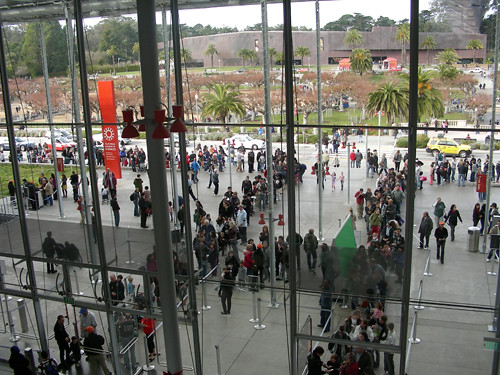
Visitors waiting at the front entrance, (12:30 PM, Dec. 30th, 2009- RCD)
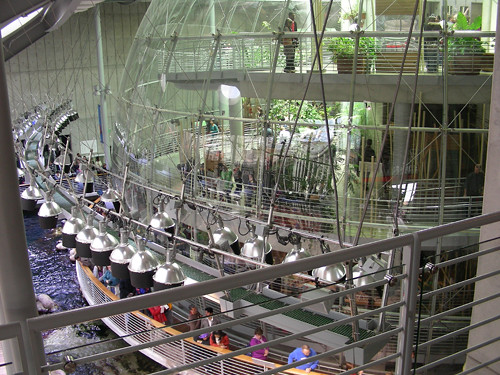
The Rainforest exhibit - RCD photo.
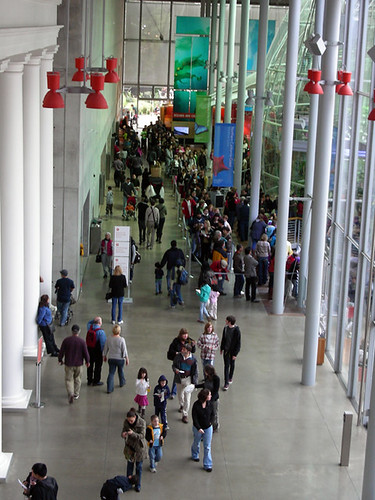
Waiting to enter the Rainforest RCD-photo.
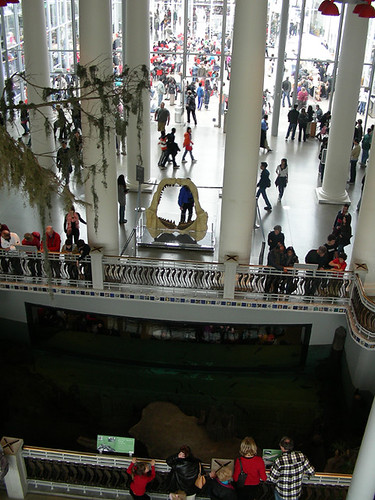
Our albino alligator Claude’s swamp, central courtyard. RCD phot.
So if it is the holiday season, why am I here in the lab? Part of the answer is that I am planning our next expedition, GG IV. A small group of us are going back to the islands in February with several rather specific missions… I will describe our plans in the next blog. Meantime, here are some updates:
Dr. Tom Daniel’s publication with Estrela Figueirido on the Acanth flowers of São Tomé and Príncipe was just published today, and we are taking copies over to islands with us. As usual, we have provided an abstract in Portuguese.

Figure 3 from the new paper (T. Daniel composite).

Afroablepharis on Sao Tome – D Lin phot-GG II
Above is a leaf litter skink called Afroablepharis. Until we started working on the island fauna, both islands were thought to be inhabited by the same species (then called Panaspis africanus). We provided tissue samples of some of our GGI material from both islands to colleagues at the University of Madeira. Dr. Jose Jesus and his colleagues found that the two populations were genetically distinct and that each island had its own, separate species.

On-going island projects (RCD construct)
Unfortunately, all of the original specimens from which tissues were taken were subsequently lost in the international mail and were never returned to the Academy. Since we still have additional preserved skinks from the same localities on both islands, my Research Assistant, Lauren Scheinberg (left, above), is carefully examining all of them to find the physical differences we would usually (but not always) expect to find in two species distinct from one another. We are now formally collaborating with Dr. Jesus and his Madeira team.
Above, on the right, is Lisette, who is still working on the jita snakes (earlier blogs), and this has also expanded into a much larger project with several international collaborators and samples from mainland Africa. The shrew comparison on the lower left is one of our goals for GG IV. We will meet up with Ricardo Lima on São Tomé, the man who rediscovered this unlikely creature.
More detail on GG IV when I return from Ethiopia.
Here’s the parting shot:
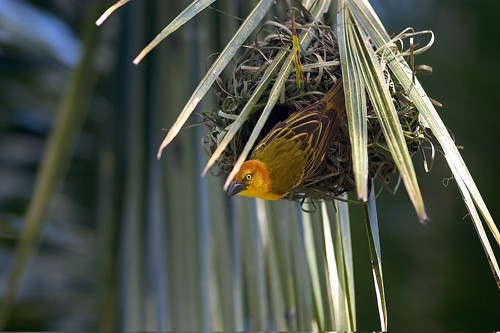
Principe Golden Weaver, Ploceus princeps. Weckerphoto - GG III
PARTNERS
We gratefully acknowledge the support of the G. Lindsay Field Research Fund, Hagey Research Venture Fund of the California Academy of Sciences, the Société de Conservation et Développement (SCD) and Africa’s Eden for logistics, ground transportation and lodging, STePUP of Sao Tome http://www.stepup.st/, Arlindo de Ceita Carvalho, Director General, and Victor Bomfim, Salvador Sousa Pontes and Danilo Barbero of the Ministry of Environment, Republic of São Tomé and Príncipe for permission to export specimens for study, the continued support of Bastien Loloumb of Monte Pico and Faustino Oliviera, Director of the botanical garden at Bom Sucesso. Special thanks for the generosity of private individuals, George G. Breed, Gerry F. Ohrstrom, Timothy M. Muller, Mrs. W. H. V. Brooke, Mr. and Mrs. Michael Murakami, Hon. Richard C. Livermore and Prof. & Mrs. Evan C. Evans III for helping make these expeditions possible.